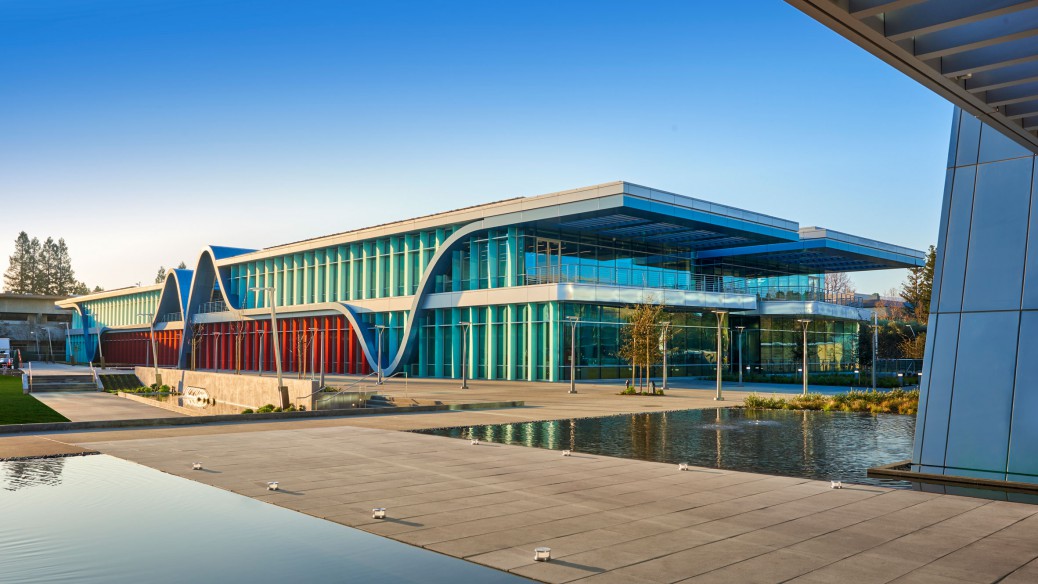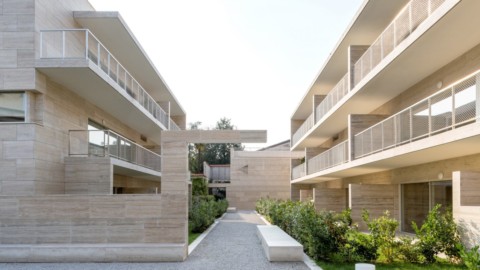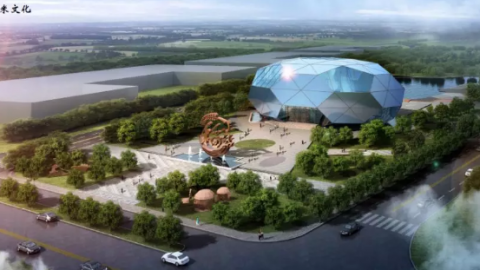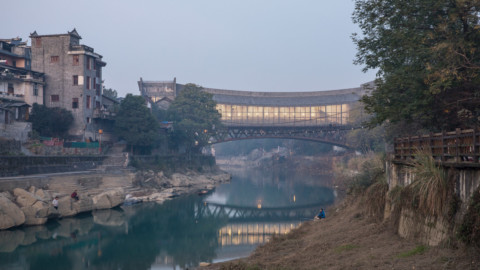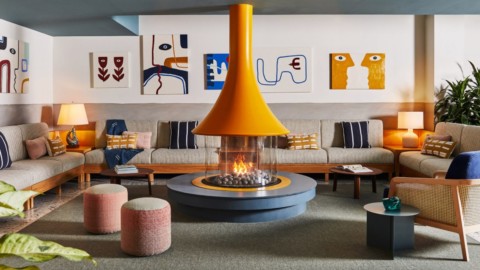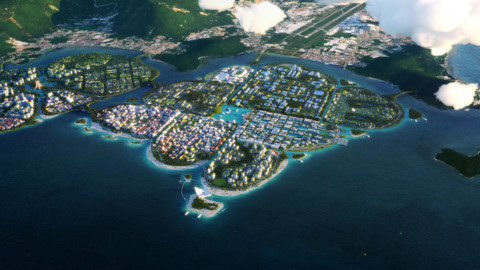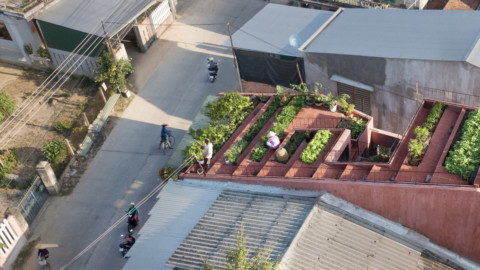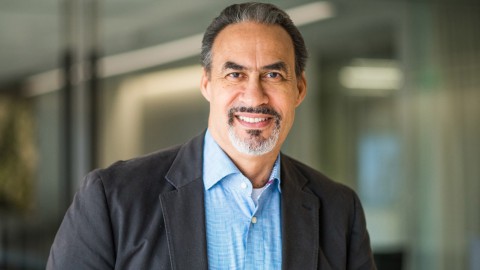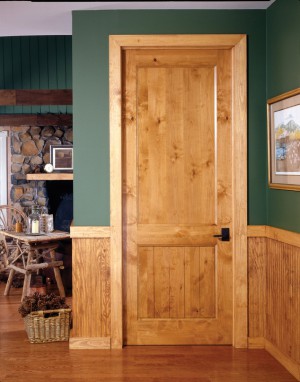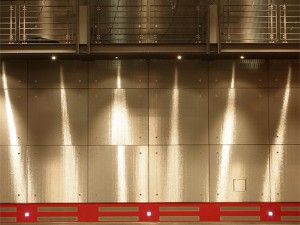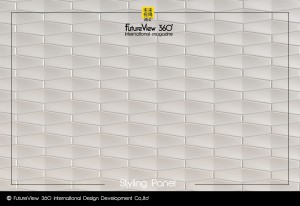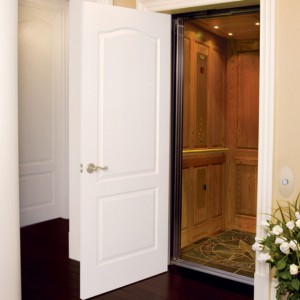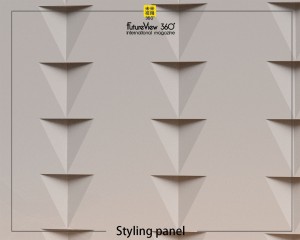US studio Form4 Architecture has designed a Palo Alto office complex that features rectangular structures wrapped in glass and metal, with curved elements that are meant to represent the “highs and lows of exploratory research and development”.
The Innovation Curve Technology Park is located on the edge of the Stanford Research Park, a business campus affiliated with Stanford University. Companies such as Facebook, Hewlett-Packard, Nest and Tesla have rented space at the Silicon Valley campus, which was started in the 1950s.
美國工作室Form4 Architecture設計了一個Palo Alto辦公大樓,其特色是採用玻璃和金屬包裹的矩形結構,彎曲元素代表著“探索性研究和發展的高潮和低谷”。
創新曲線科技園位於斯坦福研究園的邊緣,這是斯坦福大學附屬的商業園區。 Facebook,惠普,Nest和特斯拉等公司在矽谷校園租用了空間,該校園始建於20世紀50年代。
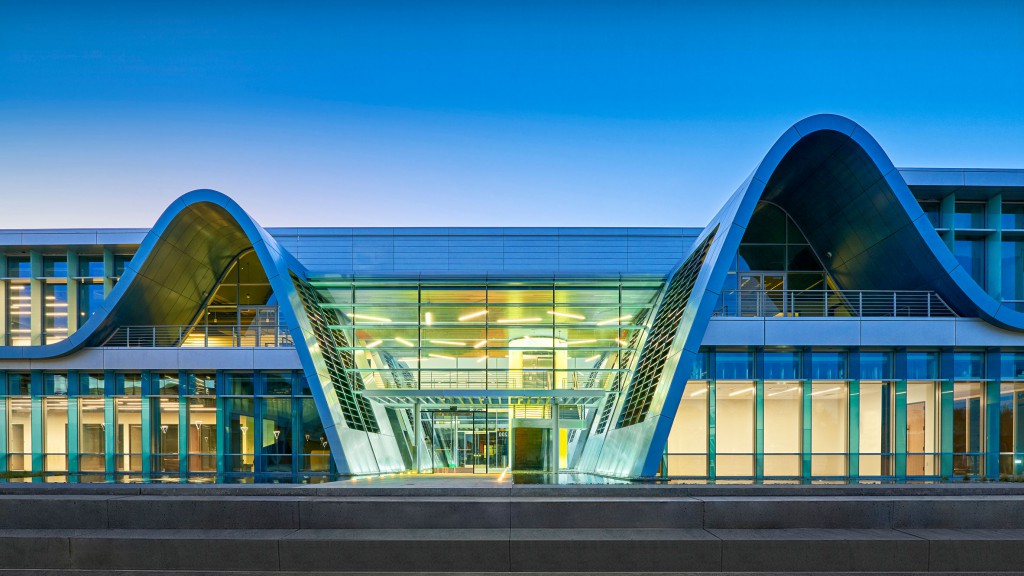
Constructed on a 13.5-acre (5.4-hectare) site, the new complex will eventually consist of four buildings organised around a central courtyard. Two of the buildings have been completed, with the others slated to open in 2020.
The aim of the new complex is to attract tenants focused on computer gaming, translation software and other digital endeavours. The project was designed by Form4 Architecture, a San Francisco studio that says it is “violently disrupting the status quo in Silicon Valley”.
新建築群佔地13.5英畝(5.4公頃),最終將由圍繞中央庭院組成的四座建築組成。 其中兩座建築已經完工,其他建築將於2020年開放。
新綜合體的目的是吸引專注於計算機遊戲,翻譯軟件和其他數字化工作的租戶。 該項目由舊金山工作室Form4 Architecture設計,該工作室稱其“暴力破壞了矽谷的現狀”。
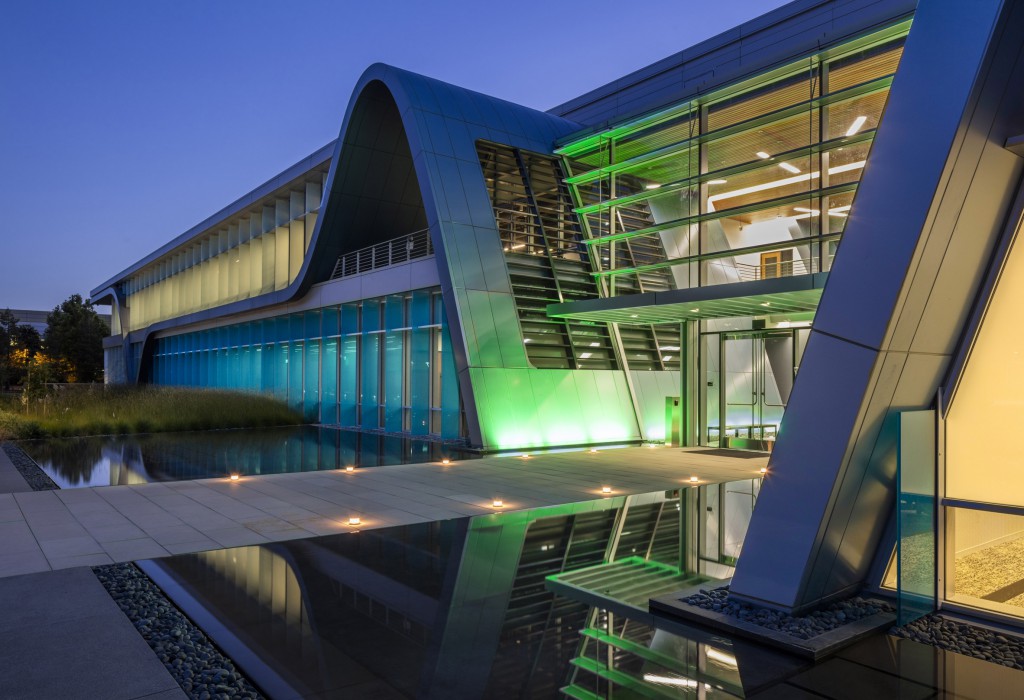
The buildings are mostly the same in terms of their scale and appearance. Three of the buildings are 66,700 square feet (6,196 square metres), while the fourth totals 76,560 square feet (7,113 square metres).
Each building is composed of a central lobby and two slightly offset wings, with exterior walls made of glass and metal. Balconies at the end of each structure are shaded by a projecting roof plane.
建築物的規模和外觀大致相同。 其中三棟建築面積為66,700平方英尺(6,196平方米),而第四棟建築面積為76,560平方英尺(7,113平方米)。
每棟建築都由一個中央大廳和兩個略微偏移的翼組成,外牆由玻璃和金屬製成。 每個結構末端的陽台由突出的屋頂平面遮擋。
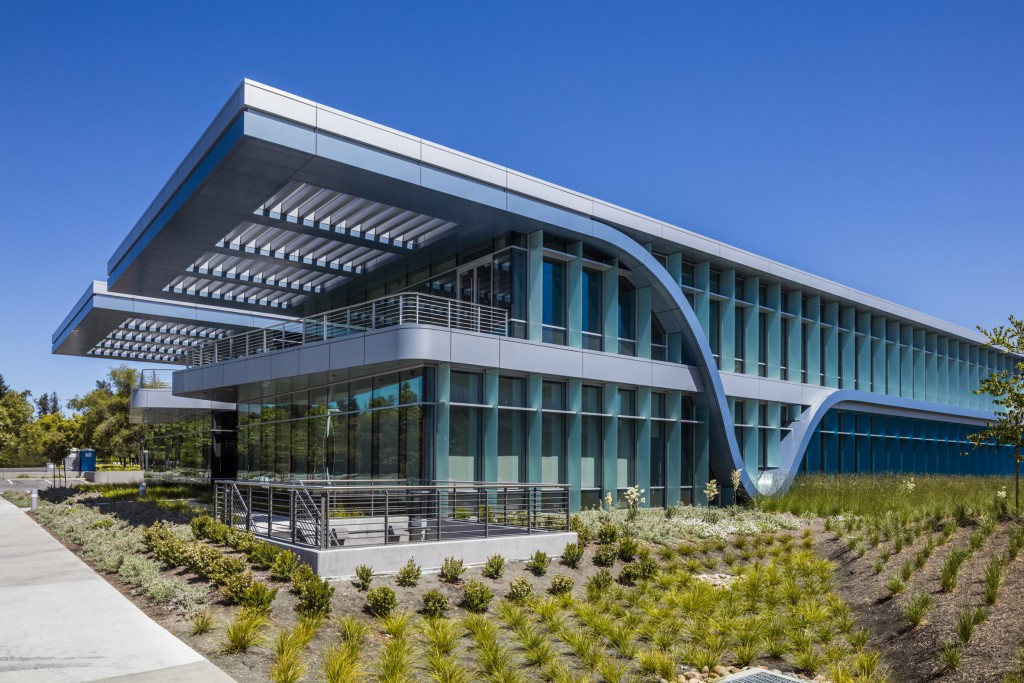
Roughly rectangular in plan, the buildings have curved protrusions and wavy facade accents that represent the roller-coaster-like nature of innovation.
“The peaks and valleys of sweeping metal curves serve as architectural metaphors for the highs and lows of exploratory research and development,” the team said in a project description.
大致長方形的建築物,建築物有彎曲的突起和波浪形的立面裝飾,代表了過山車般的創新性質。
該團隊在項目描述中表示,“金屬曲線的高峰和低谷是探索性研究和開發的高點和低點的建築隱喻。”
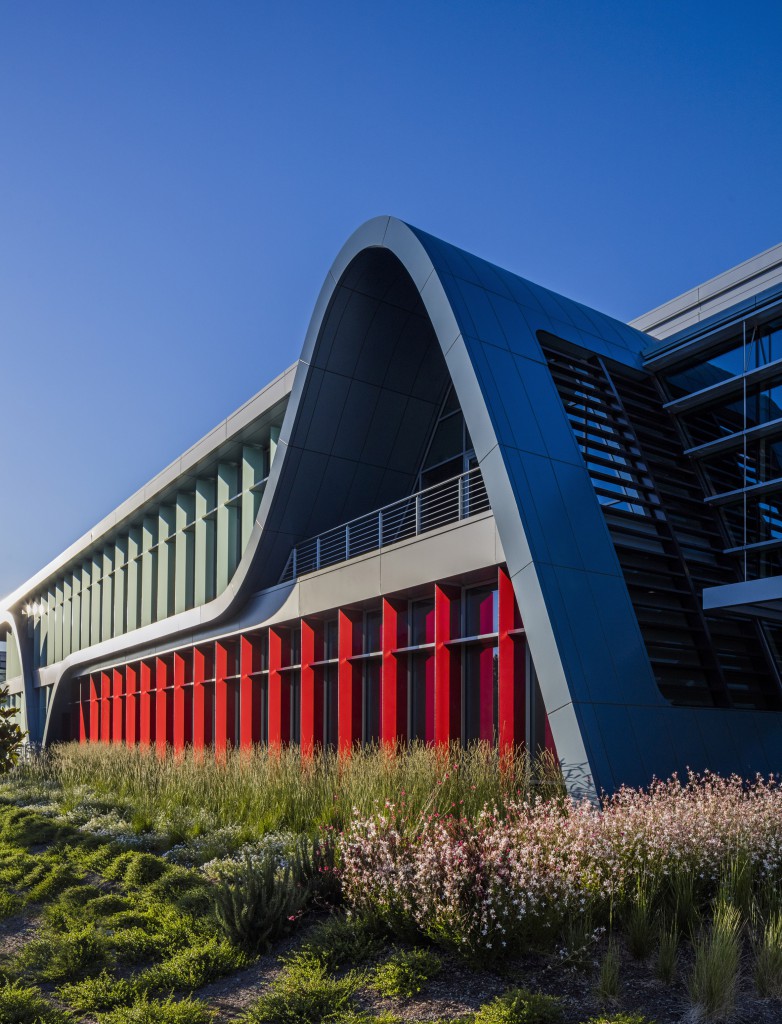
The high point of the curves are intended to symbolise the creative spark, while the low points signify risk assessment, financing and decision-making. Long, horizontal bands that wrap the facades are meant to represent the implementation phase.
曲線的高點旨在像徵創造性的火花,而低點則意味著風險評估,融資和決策。 包裹外牆的長而水平的帶子意味著代表實施階段。
“The lyrical design serves as a potent visual reminder of the dedicated, expansive, and intense work taking place inside,” the team said.
“抒情設計是對內部發生的專注,廣泛和激烈工作的有力視覺提醒,”該團隊說。
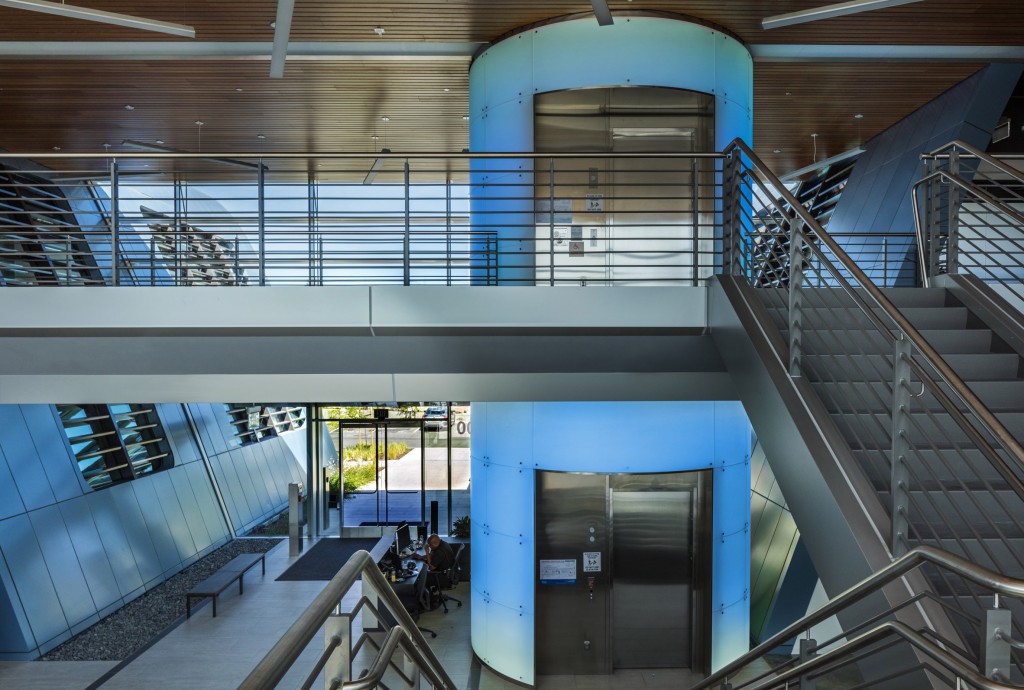
Beyond their symbolic meaning, the curved elements have a functional purpose, as they help shade the building. Vertical glass fins and horizontal light shelves further help mitigate solar heat gain. Inside, solar-controlled skylights reduce the need for artificial illumination.
除了它們的象徵意義之外,彎曲的元素具有功能性的目的,因為它們有助於遮蔽建築物。 垂直玻璃翅片和水平燈架進一步有助於減少太陽能熱量的增加。 在室內,太陽能控制的天窗減少了對人工照明的需求。
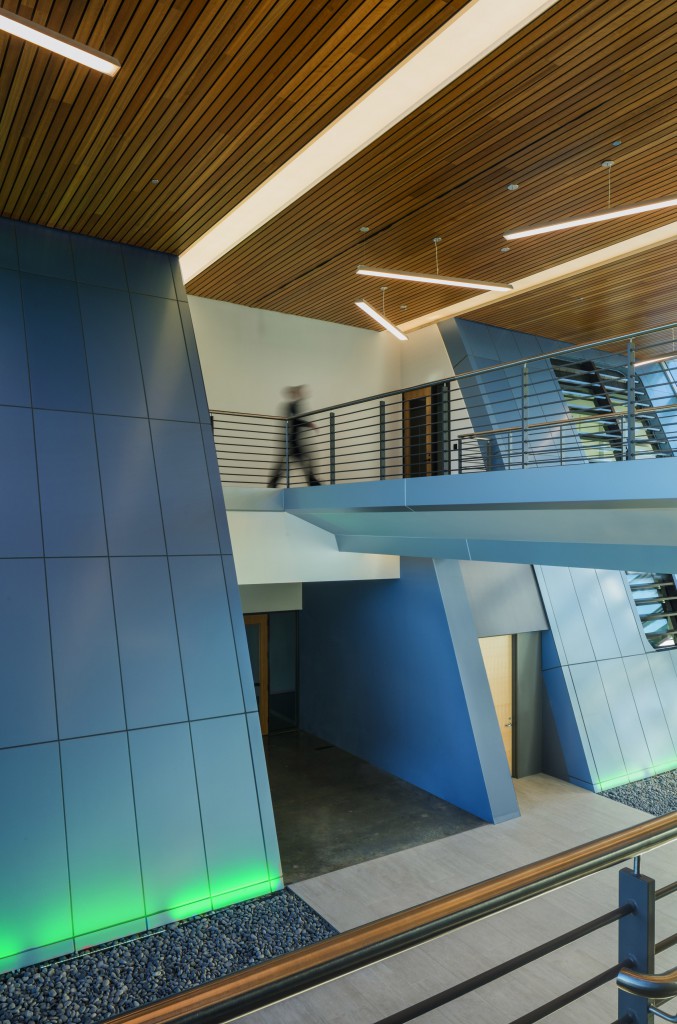
The daylighting and shading devices are among the numerous elements that enabled the project to earn LEED Platinum certification from the US Green Building Council. Other sustainable features include high-efficiency mechanical and electrical systems, cool roofs, photovoltaic panels and locally sourced materials.
採光和遮陽設備是眾多元素之一,使該項目獲得美國綠色建築委員會頒發的LEED白金認證。 其他可持續的功能包括高效機械和電氣系統,冷卻屋頂,光伏板和本地採購的材料。
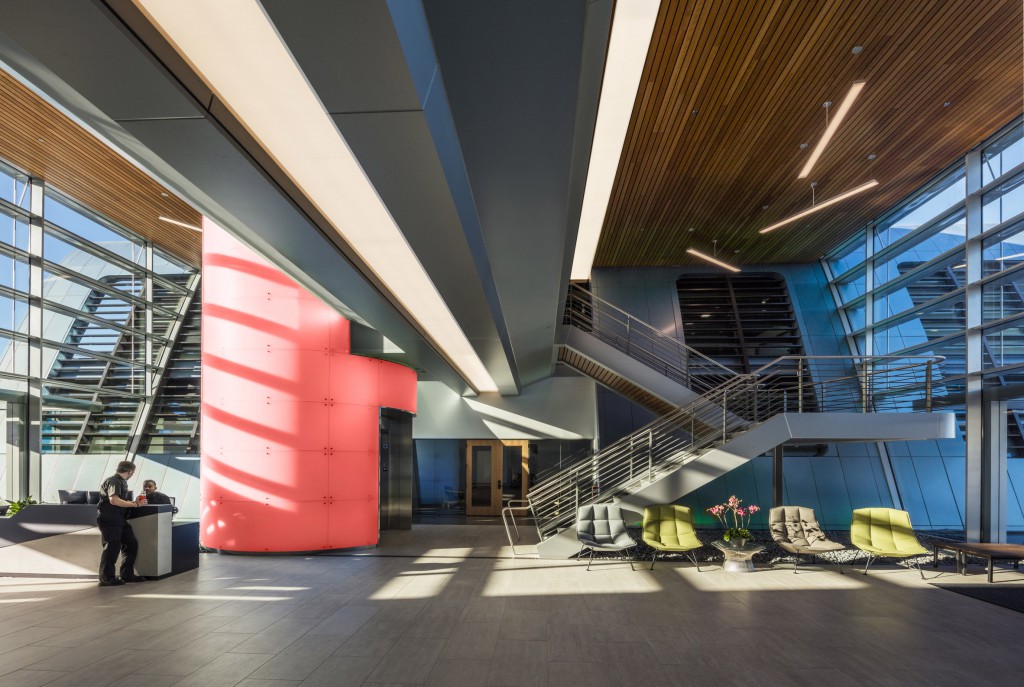
“The sustainable features contribute to significant increase in thermal comfort for the occupants, which results in higher occupant satisfaction and productivity,” the team said.
“可持續性特徵有助於顯著提高乘員的熱舒適度,從而提高乘員滿意度和生產率,”該團隊表示。
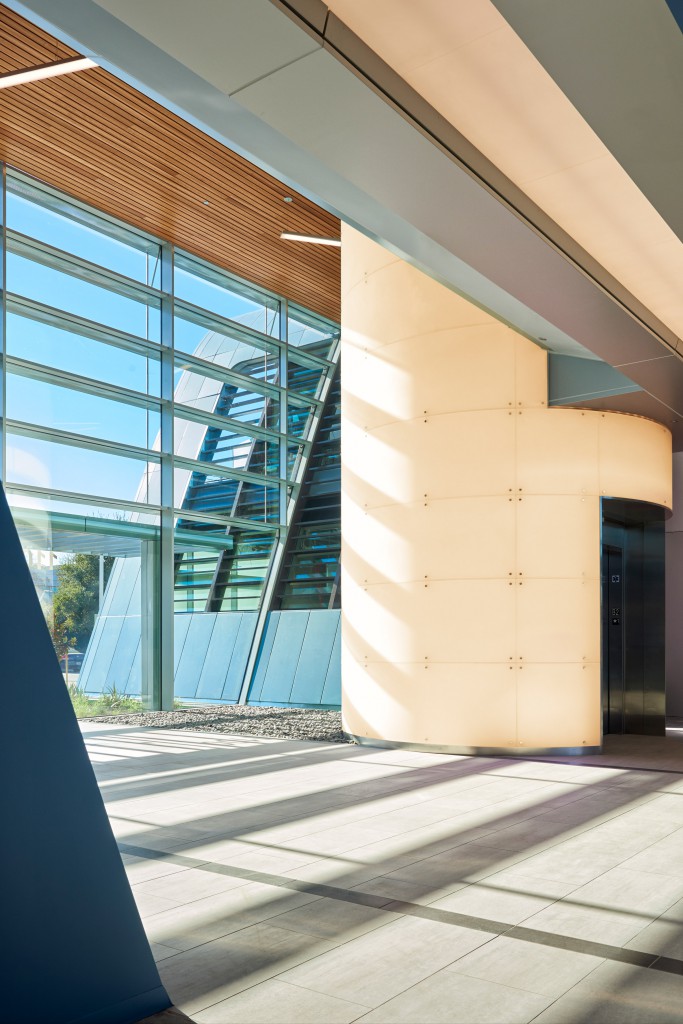
At the heart of each building is a double-height lobby, where the team incorporated metal railings, wooden ceilings and tile flooring.
A circular elevator enclosure is wrapped in programmable LED panels that change colours. Under the lobby’s open staircase, a bed of grey pebbles provides a visual connection to reflecting pools outside the building.
每棟建築的中心都是一個雙層高的大堂,團隊中有金屬欄杆,木製天花板和瓷磚地板。
圓形電梯外殼包裹在可編程LED面板中,可更換顏色。 在大堂的開放式樓梯下,一幢灰色鵝卵石床與建築物外的反射池形成視覺連接。
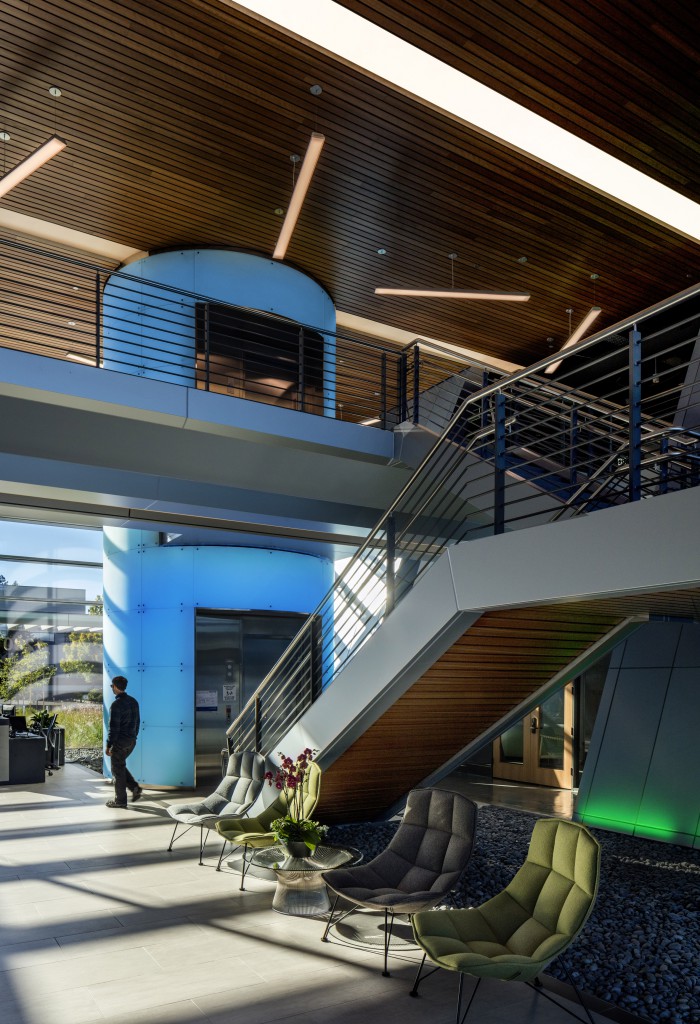
The campus features native vegetation and bioswales that help manage stormwater. Diagonal walkways cross through the site and connect the complex to adjacent streets.
Other projects in Silicon Valley include Google’s new California headquarters, which is currently under construction. Designed by the studios of Bjarke Ingels and Thomas Heatherwick, the campus features a series of pavilions and “circus tent” roof.
校園內有原生植被和生物沼澤,有助於管理雨水。 對角走道穿過場地,將建築群連接到相鄰的街道。
矽谷的其他項目包括谷歌新的加州總部,目前正在建設中。 校園由Bjarke Ingels和Thomas Heatherwick的工作室設計,設有一系列涼亭和“馬戲團帳篷”屋頂。
Project credits:
Architect: Form4 Architecture
Team: Robert J. Giannini, principal; John Marx, design principal; James Tefend, principal
Client: Sand Hill Property Company
Contractor: Vance Brown Builders
Landscape architect: Studio5
Lighting designer: Luminae Souter
Structural engineer: DCI Inc
MEP engineering: M-E Engineers
項目學分:
架構師:Form4架構
團隊:Robert J. Giannini,校長; 設計負責人約翰馬克思; James Tefend,校長
客戶:Sand Hill Property Company
承包商:萬斯布朗建築商
景觀設計師:Studio5
照明設計師:Luminae Souter
結構工程師:DCI Inc.
MEP工程:M-E工程師
FROM:https://www.dezeen.com/2019/05/15/technology-campus-form4-architecture-silicon-valley/

